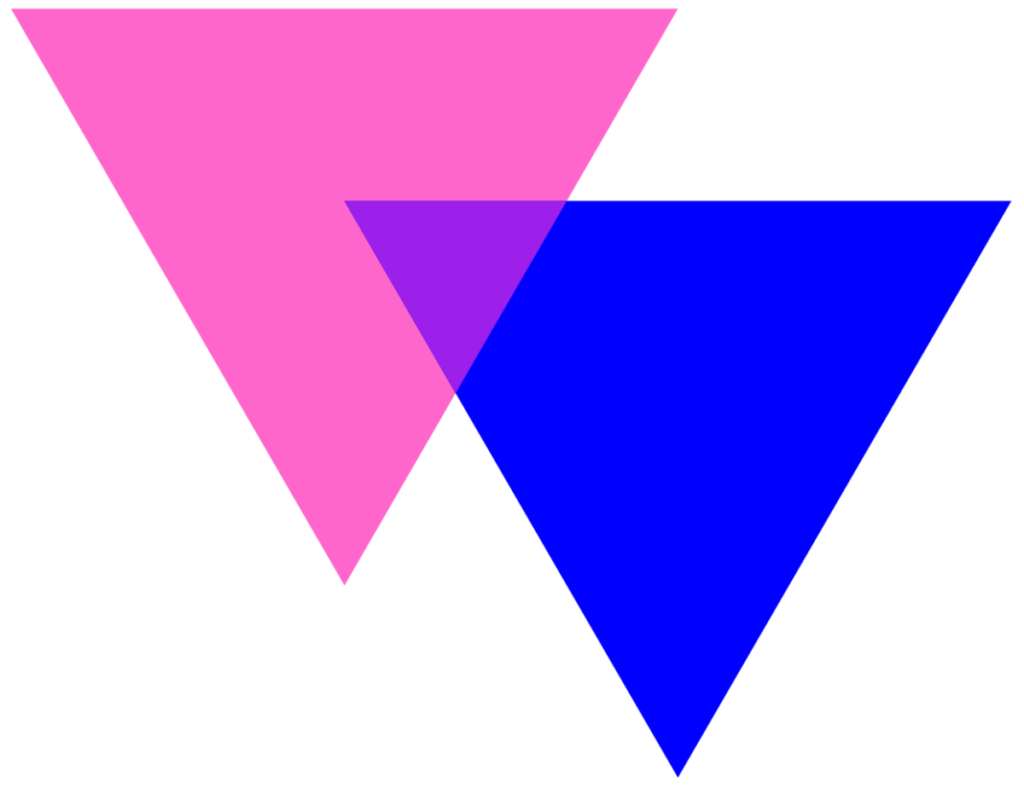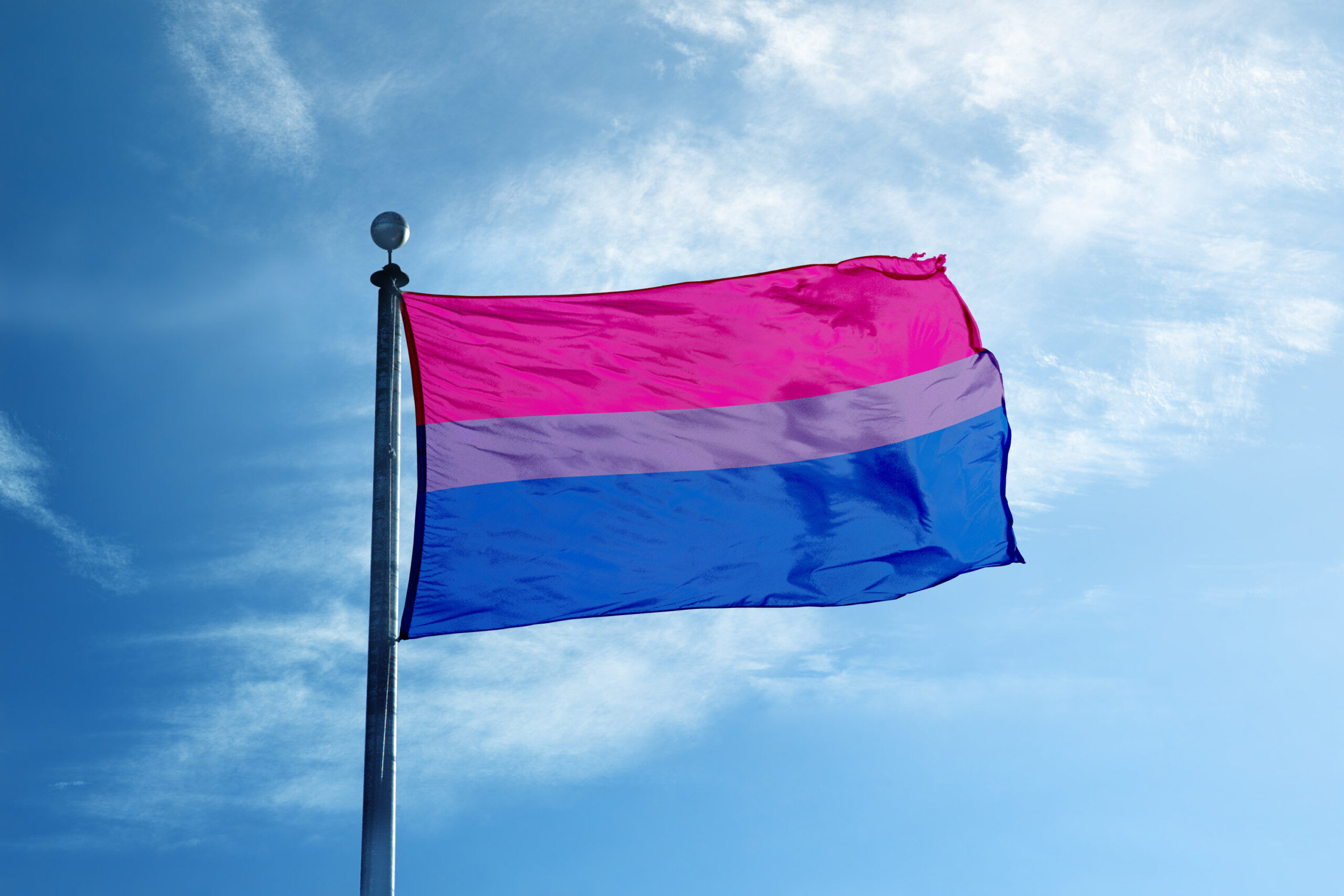Bisexuality refers to a person who is attracted to more than one gender. However, bisexuality does not solely refer to cisgender men and women: the word is inclusive of all gender identities and includes nonbinary and transgender people. Bisexual people are attracted to multiple genders, but that does not mean they are attracted to ALL genders. There is no right or wrong way to be bisexual and sexuality is fluid. Some people realize they are bisexual at a very young age and others don’t realize until they are much older. The usage of flags has been historically critical in expressing oneself and in efforts to create more visibility.
If you think you might identify with bisexuality or want to learn more about this community read about what it means to be bisexual here.
The Bisexual Flag Today
The current bisexual flag was designed by Michael Page in 1998. Although bisexual individuals often use the traditional rainbow flag to show their pride the bisexual flag was created to better symbolize the community. The purple stripe in the middle is a combination of the pink and blue mixed together alluding to the flexibility and fluidity of the bisexual identity. The creation of the bisexual flag was a part of the effort to create an annual Bisexuality Visibility day which is now celebrated on September 23rd.
View this post on Instagram
So what does this flag represent? As a whole, the unification of bisexual individuals. Below is a breakdown of what the colors of this flag represent.
-
- Pink: Attraction to people of the same gender.
- Blue: Attraction to those of an opposite gender.
- Purple: Attraction to two or more genders.
Alternative versions of the bisexual flag
The current version of the bisexual flag is also the first version. However it was inspired by the biangles. The biangles are a series of three overlapping triangles in the same three colors of the flag created by artist Liz Nania. The design was created for the Second National March on Washington for Lesbian and Gay Rights in 1987 and quickly became one of the first symbols of bisexual visibility. The pink and blue triangles represent boys and girls and the purple triangle is a reference to the Lavender Menace.

Controversy surrounding the bisexual flag
The biggest controversy related to the bisexual flag was when BiNet USA declared themselves the rightful owners of the copyright to the bisexual flag. BiNet USA is a US non-profit group that claimed through a series of Twitter posts that they had the rights to the use of the bisexual flag and that if any corporations such as Target sell the flag they should also be giving a portion of the profit to them.
This caused immediate backlash within the bisexual community as they believe pride flags should be public domain. It opened up the conversation about the controversy of making a profit off of a marginalized community and how the bisexual flag and what it represents belongs to the community and not to a corporation.
Want to learn more about bisexuality?
Being bisexual means that you experience romantic, emotional, and/or physical attractions for multiple genders. Although “bisexual” is the most common term used to identify someone who loves multiple genders, identity is flexible. Some members of the bisexual community choose to omit labels completely in an effort to dismantle the idea of needing labels to begin with.
With that being said bisexuality can include asexual individuals, transgender individuals, polyamorous individuals, and more. There are endless ways to be bisexual. If you resonate with these ideas or want to learn more click here.
Closing thoughts
The bottom line is representation matters. Flags are a necessary tool when it comes to representing a community, identity, or sexuality. Putting up a bisexual flag or wearing it on a t-shirt shows appreciation and pride for the community. This is not only important for community members who want to feel unified, but also for visibility purposes. The colors and symbols on a flag show the world what it means to be a part of that community and give everyone a chance to show their pride.
Don't forget to share:
Help make sure LGBTQ+ stories are being told...
We can't rely on mainstream media to tell our stories. That's why we don't lock our articles behind a paywall. Will you support our mission with a contribution today?
Cancel anytime · Proudly LGBTQ+ owned and operated
Read More in Culture
The Latest on INTO
Subscribe to get a twice-weekly dose of queer news, updates, and insights from the INTO team.
in Your Inbox













